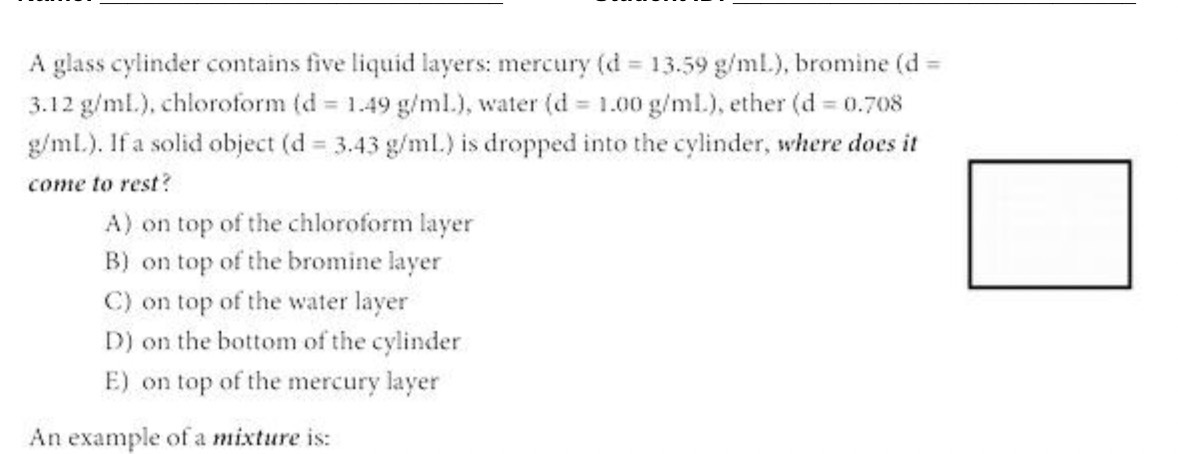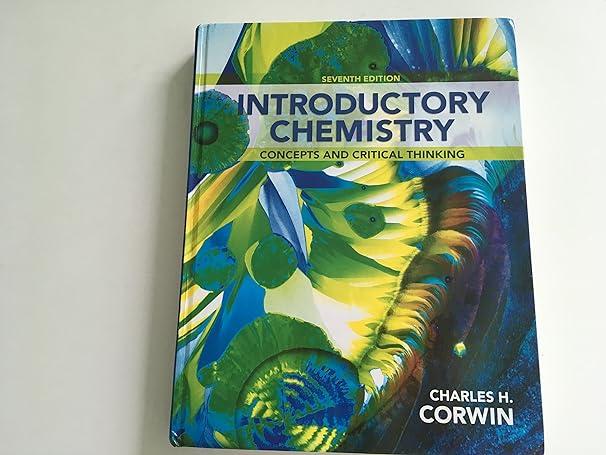Answered step by step
Verified Expert Solution
Question
1 Approved Answer
A glass cylinder contains five liquid layers: mercury (d = 13.59 g/ml.), bromine (d = 3.12 g/ml.), chloroform (d = 1.49 g/ml.), water (d

A glass cylinder contains five liquid layers: mercury (d = 13.59 g/ml.), bromine (d = 3.12 g/ml.), chloroform (d = 1.49 g/ml.), water (d = 1.00 g/ml), ether (d = 0.708 g/ml.). If a solid object (d = 3.43 g/ml.) is dropped into the cylinder, where does it come to rest? A) on top of the chloroform layer B) on top of the bromine layer C) on top of the water layer D) on the bottom of the cylinder E) on top of the mercury layer An example of a mixture is:
Step by Step Solution
There are 3 Steps involved in it
Step: 1
To determine where the solid object will come to rest in the glass cylinder we need to consider the ...
Get Instant Access to Expert-Tailored Solutions
See step-by-step solutions with expert insights and AI powered tools for academic success
Step: 2

Step: 3

Ace Your Homework with AI
Get the answers you need in no time with our AI-driven, step-by-step assistance
Get Started


